When traditions bring the crew together on the moon — Commander's report: lunar day 10
Traditions from Earth and new traditions on the moon help the Sensoria M3 crew bond during their analog mission at the HI-SEAS habitat.

Dr. Michaela Musilova is the director of Hawaii Space Exploration Analog and Simulation (HI-SEAS) program, which conducts analog missions to the moon and Mars for scientific research at a habitat on the volcano Mauna Loa. Currently, she is in command of the two-week Sensoria M3 mission and contributed this report to Space.com's Expert Voices: Op-Ed & Insights.
Commander's report for the Sensoria M3 moon mission at HI-SEAS
Lunar day 10 (Dec. 13, 2020)
Red socks, stockings and hats lined the floor outside my crewmembers' bedrooms on the morning of lunar mission day 3 (Dec. 6). Suspiciously, there were no red pieces of clothing outside my bedroom, which may have given away the origin of these items. When my crew looked inside, they found some freeze-dried ice cream and HI-SEAS patches. It was my little thank you gift to them on this special day in my native country's (Slovakia) tradition.
For as long as I can remember, waking up on Dec. 6 would almost always be accompanied by a lot of joy. In our tradition, the St. Nicholas delivers treats to well-behaved children. Naughty children would receive a visit from Čert, who is a devil-like character similar to Krampus in other European traditions. St. Nicholas, or Mikuláš in Slovak, hides the treats in stockings during the night of Dec. 5, so many children wake up to find these sweets and small gifts the next day. Originally from Asia Minor (nowadays Greece and Turkey), St. Nicholas is considered the inspiration behind Santa Claus.
Related: The start of the Sensoria M3 lunar mission is like Groundhog Day — Commander's report: lunar day 2
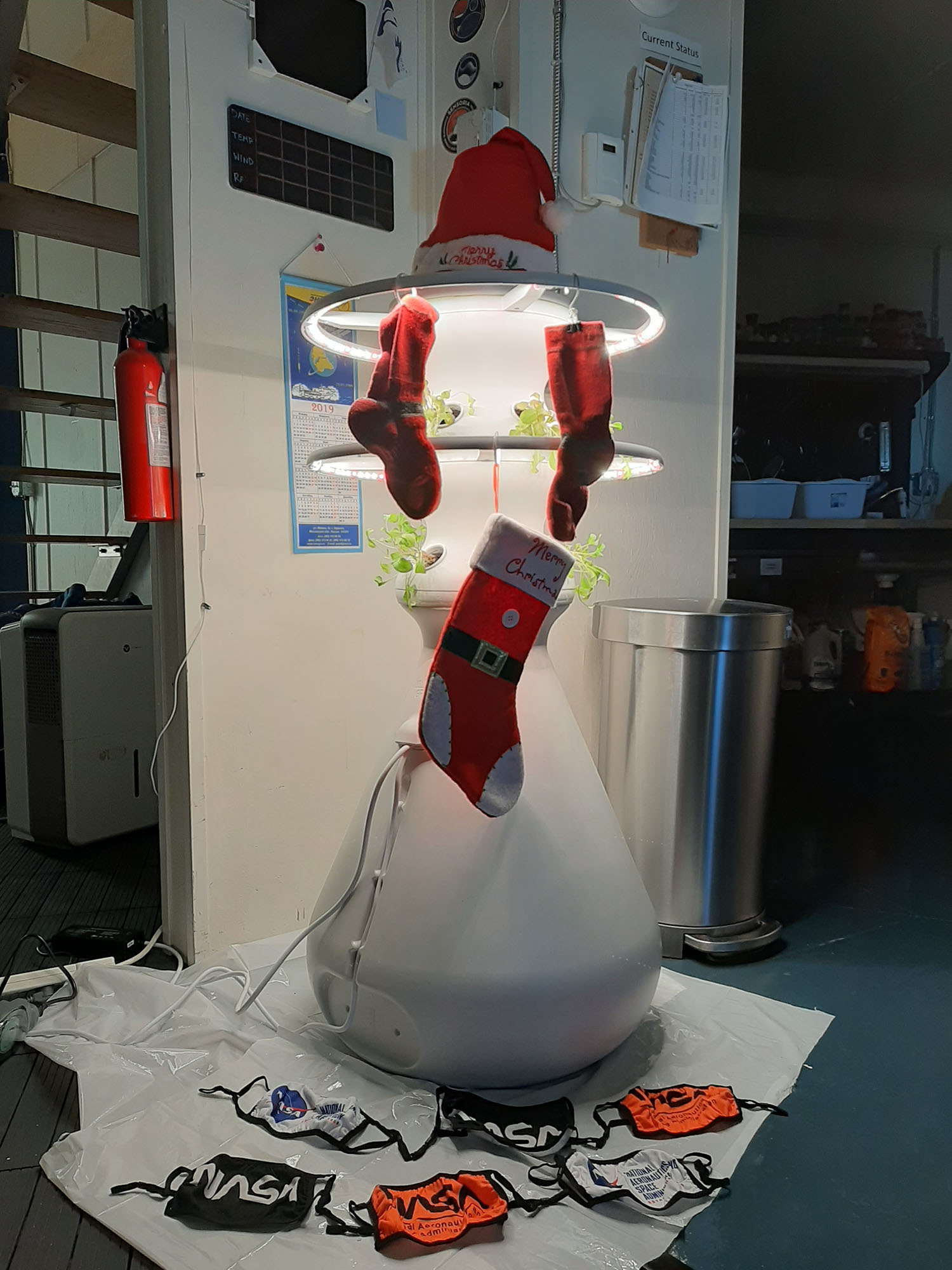
During my travels around the world and beyond on analog space missions, I always continue this tradition with my friends, colleagues and crewmembers. Their faces full of surprise and delight are priceless. Other crewmembers chipped into this festive atmosphere as well. Vice Commander James Ward gave everyone a facemask with a NASA design, while Chief Science Officer Emily Seto gave us a Flipstik adhesive. Emily brought multiple collaborative projects on this mission and Flipstik is one of them. She is trying to demonstrate the Flipstick product's adhesive properties on various surfaces around the habitat and outside in the lava terrain. It can be used to prop electronics (such as a phone) on surfaces, allowing the user to conduct other hands-on activities in the laboratory or during fieldwork.
Another technology demonstration that we're performing during this Sensoria M3 mission is the testing of the Lettuce Grow hydroponics system. Our primary diet in this analog lunar environment consists of processed and freeze-dried foods. To expand our current selection of foods, Emily initiated a continuous collaboration with Lettuce Grow. They are providing a self-sustaining hydroponics system with indoor LED grow lights that will support the growth of fresh greens, such as "Astro" arugula and "Encore" baby lettuce mix during missions. It has been interesting to observe the growth and persistence of the plants considering the temperature and humidity fluctuations in the habitat. The results of this study may even provide implications for the selection of vegetables and herbs for future space missions.
Get the Space.com Newsletter
Breaking space news, the latest updates on rocket launches, skywatching events and more!
Related: Astronauts enjoy space veggies and look to the future of cosmic salads
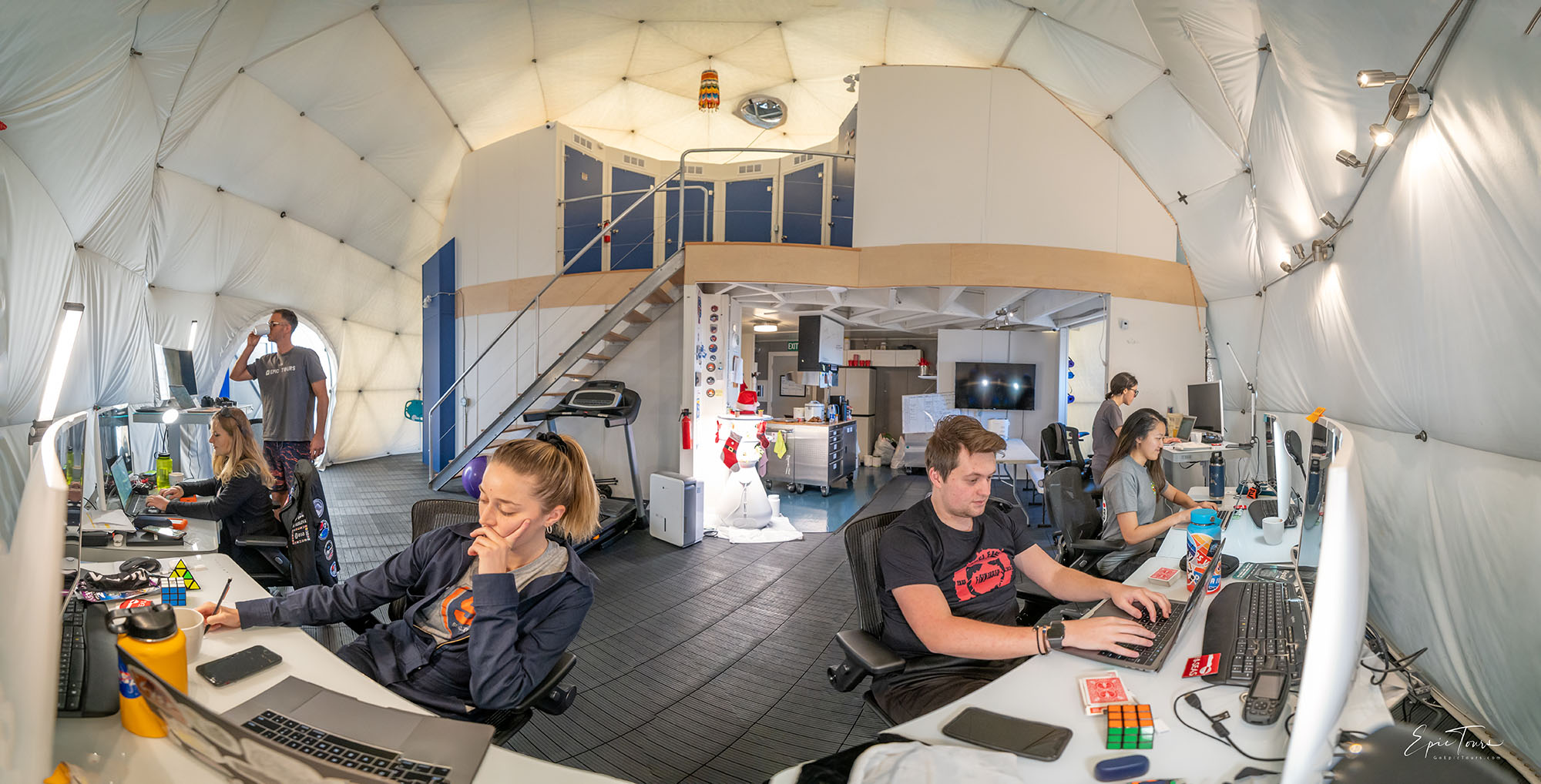
Apart from providing us with fresh food, the Lettuce Grow mini-greenhouse has also become our habitat's Christmas tree. It looks a bit like a miniature tree made from recycled materials. All the presents from "St. Nicholas" and those from my crewmembers quickly became decorations on and around our lunar festive tree. Another vital component of our habitat's decor is a colorful rubber chicken that makes a loud squeaky sound. It is a gift for the habitat from the previous Selene II crew. They wanted me to use it to wake up the current crew if some crewmembers would struggle to get up in the morning. I do use it for this purpose and some crewmembers jump out of bed the moment I say that I'm about to use the chicken. Clearly, it is more effective than an alarm clock.
However, this chicken has another function too. Every time the crew makes a precious batch of fresh cookies, the chicken "guards" the cookies. We don't have many ingredients available to us for cooking and baking, so having dessert is highly valued by the crew. When someone wants to have a cookie, they need to squeeze the chicken and thus announce to everyone in the habitat that they're eating a valuable treat. For this reason, this toy now has been named "Cookie Chicken." As strange as this tradition may seem, it is an important part of our life on the moon. All traditions during analog space missions represent a transition from us being a team of work colleagues to a group of friends or more accurately, a space family.
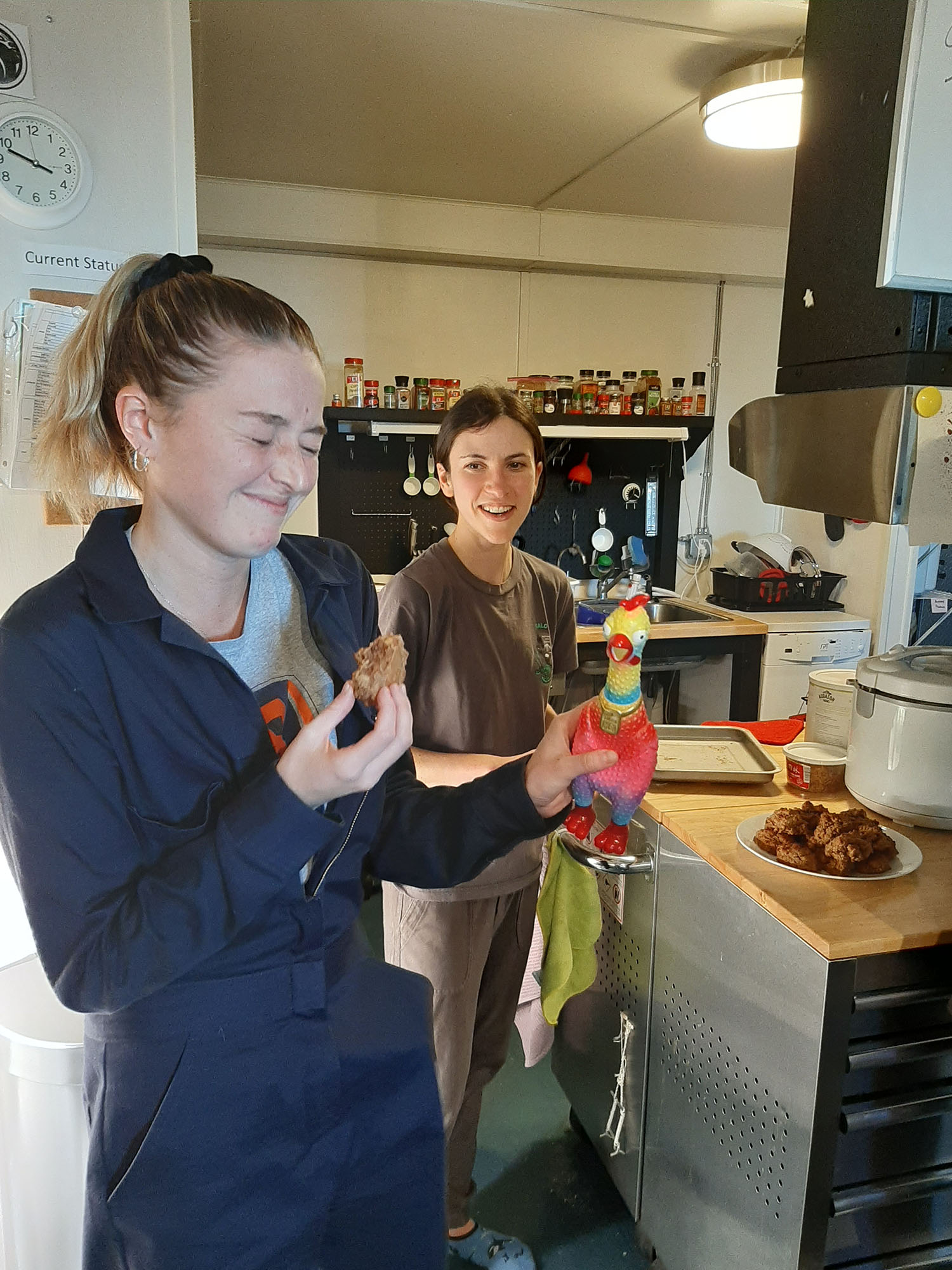
A couple of nights ago, I found myself feeling extremely happy. The whole crew was sitting around the dining room table and we were all laughing from the heart. Cookie Chicken was squeezed every time someone made a bad joke, we shared some embarrassing stories and we completely forgot our troubles. That particular night we had a dust storm raging outside our habitat, so we had to be in low power mode to make it through the night without a power outage. Our electricity comes from solar panels and it is stored in batteries. The batteries don't charge up fully during bad weather. That is why we were sitting in darkness and in very cold temperatures, as we turned our heating down to preserve power. Nevertheless, we kept each other's spirits high and laughed our problems away.
Our mission has been passing by very quickly with this great crew morale. Every day brings more memorable experiences that are as important to us as the research that we're performing on the moon. A long-duration human space mission will only be successful if the crew will get along and work together as a team. Differences need to be set aside, compromises need to be made and empathy is key. If we treat each other as a family that cares one after another, then so many obstacles can be overcome. Taking part in an analog mission is a very pleasant experience under such circumstances, which is why I have more than 20 such missions under my belt. I have been fortunate to lead lunar and Martian analog missions with wonderful crewmembers. I truly cherish these times together and I miss my crewmembers dearly once our mission ends.
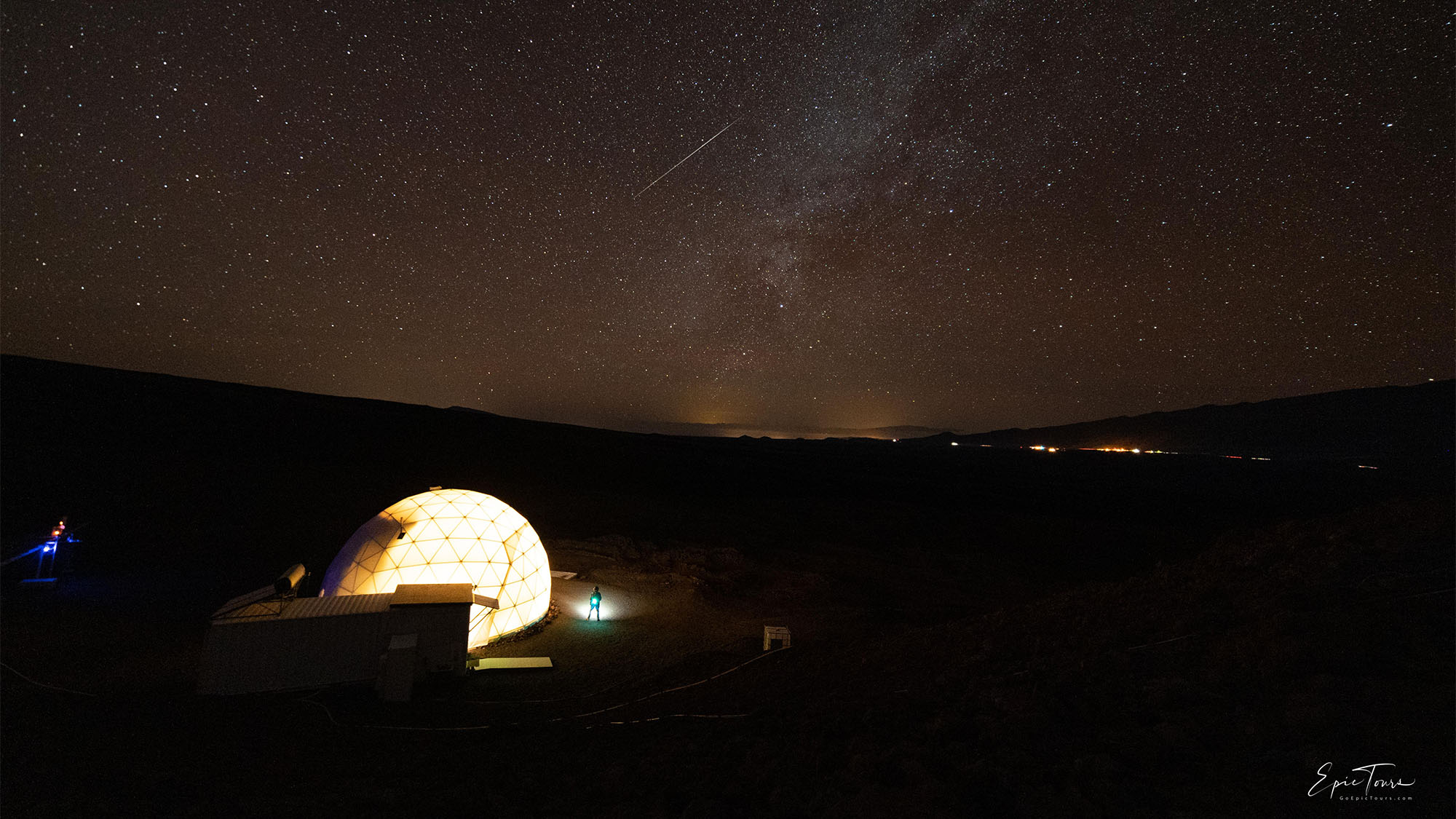
Commander Musilova signing off to go on a night moonwalk with our astrophotographer James and Chief Engineer Niko Blanks. As per another tradition of ours, the airlock is blasting with one of our favorite mission songs and I can't help myself from laughing. This song, "Come and get your love," is in the movie "Guardians of the Galaxy." It has become something like a theme song for our mission since we can't get it out of our heads. I can already see us singing and dancing in our spacesuits on our moonwalk tonight.
Follow Michaela Musilova on Twitter @astro_Michaela. Follow us on Twitter @Spacedotcom and on Facebook.
Join our Space Forums to keep talking space on the latest missions, night sky and more! And if you have a news tip, correction or comment, let us know at: community@space.com.
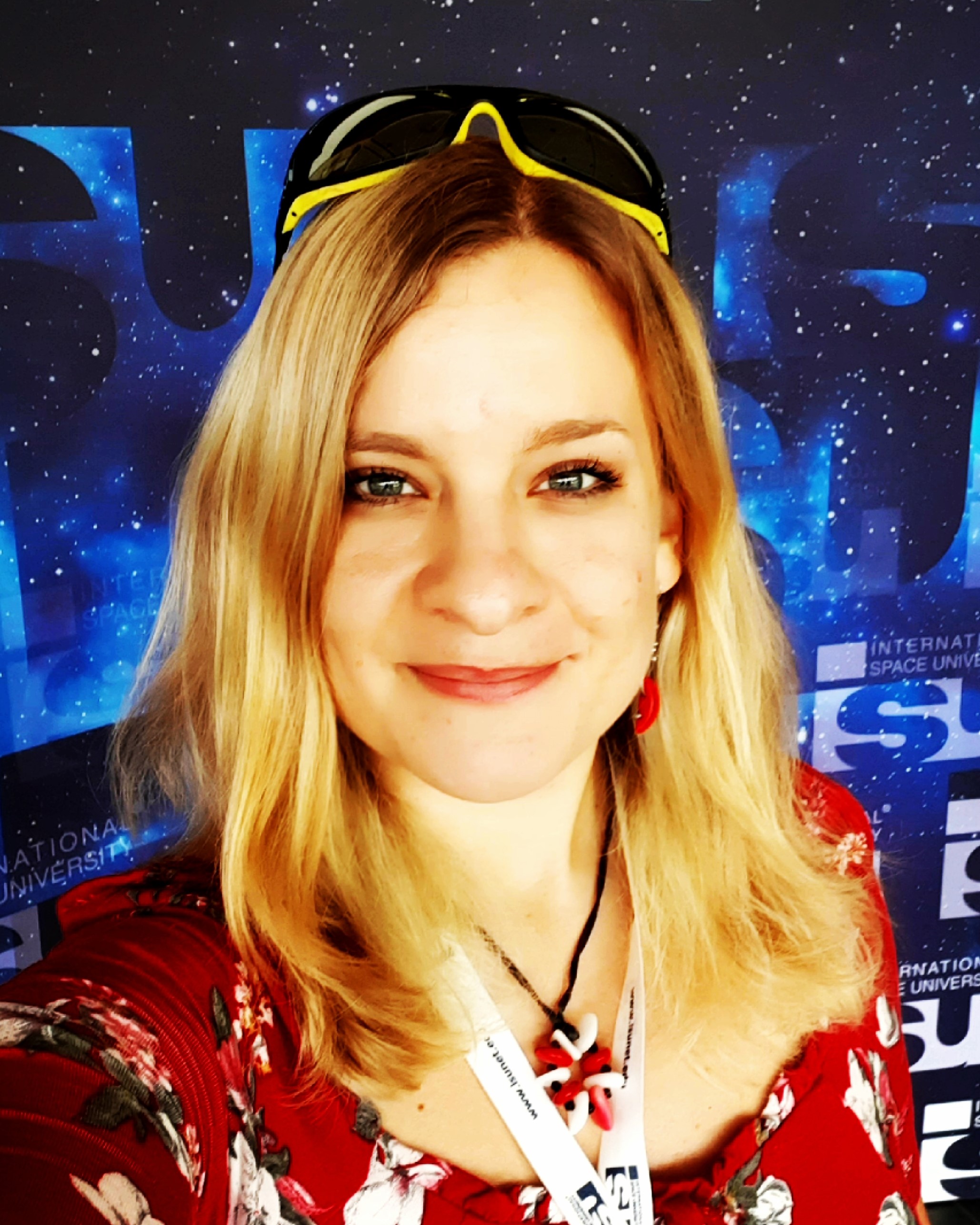
Dr. Michaela Musilova is an astrobiologist with a focus on life in extreme environments. She has a PhD degree from the University of Bristol and is a graduate from the International Space University's (ISU) Space Studies Program. Michaela's space research experience includes working at the NASA Jet Propulsion Laboratory, University of London Observatory, Canada-France-Hawaii Telescope, on NASA's and the U.K. Space Agency's MoonLite project, being an analogue astronaut and Commander of numerous simulated missions to the moon and Mars at the HI-SEAS station in Hawaii, and at the Mars Desert Research Station in Utah. Michaela is currently the Director of HI-SEAS, as part of the International MoonBase Alliance. She is also a visiting Professor at the Slovak University of Technology, Vice-Chair of the Slovak Organisation for Space Activities, Adjunct Faculty at ISU and the Senior Research Adviser for Mission Control Space Services Inc.
She has received numerous prizes and grants, including the Emerging Space Leaders Grant from the International Astronautical Federation (2016) and the Women in Aerospace – Europe Young Professional Award (2016), and she was selected as one of the most promising 30 under 30 by Forbes Slovakia (2015). Michaela is also actively involved in the Duke of Edinburgh's International Award, as a patron of the program in Slovakia and an Emerging Leader Representative for Europe, Mediterranean and Arab states. Furthermore, she enjoys participating in STEAM outreach activities from teaching at schools, giving public presentations, to working with the media and more, as well as encouraging people to pursue their dreams. For instance, she is an Advisory Board Member of the STEM Punks immersive programs for students and teachers.
